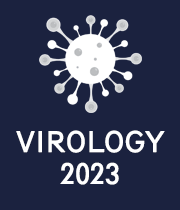Title : Impact of SARS-CoV-2 virus on Peripheral Blood Mononuclear Cells Isolation Procedure
Abstract:
SARS-CoV-2 virus infection is responsible for coronavirus disease (COVID-19), which is characterised by a hyperinflammatory response that plays a major role in determining the respiratory and immune-mediated complications of this condition. At the beginning of the pandemic, while isolating peripheral blood mononuclear cells (PBMCs) from whole blood of COVID-19 patients by density gradient centrifugation, we noticed some changes in the floating properties and in the sedimentation of the cells on density medium. Investigating this further, we found that in early phase COVID-19 patients, characterised by reduced circulating lymphocytes and monocytes, the PBMC fraction contained surprisingly high levels of neutrophils. Furthermore, the neutrophil population, analysed by flow cytometry, exhibited alterations in the cell size and in the internal complexity. This finding is consistent with the presence of low density neutrophils (LDNs) and immature forms which may explain the shift seen in the floating abilities and that may be predictive of the severity of the disease. The percentage of this subset of neutrophils found in the PBMC band was rather spread (35.4±27.2%, with a median 28.8% and IQR 11.6-56.1, Welch’s t-test early phase COVID-19 versus blood donor healthy controls P<0.0001).
Results confirm the presence of an increased number of LDNs in patients with early stage COVID-19, which correlates with disease severity and may be recovered by centrifugation on a density gradient together with PBMCs.
What will audience learn from your presentation?
(Try to list 3-5 specific items)
- The infection of SARS-CoV-2 can affect the floating properties and in the sedimentation of the blood cells on density medium
- The sedimentation on density gradients of blood cells is an easy method to assess an alteration in the cell composition of the circulating blood
- The cell populations collected post-ficoll were assessed using an automated haematology cell analyser, which is inexpensive and available also in small peripheral hospitals and in low income countries


